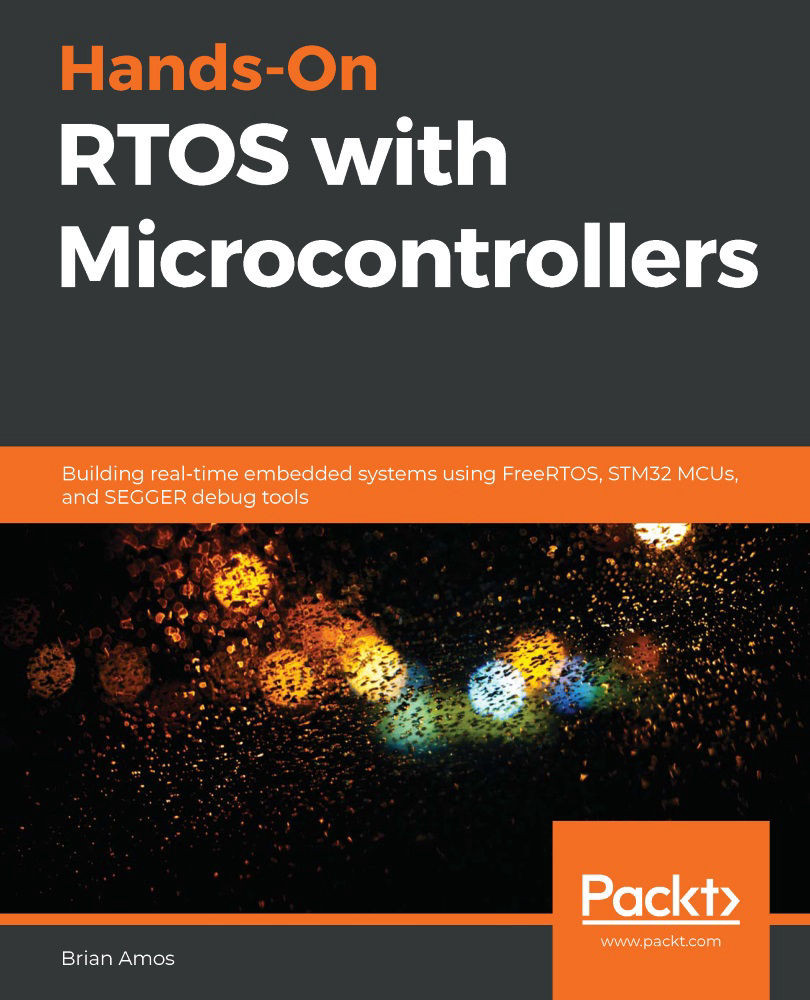Earlier, we had looked at a super loop that was looping through three functions. Now, for a very simple example, let's move each one of the three functions into its own task. We'll use these three simple tasks to examine the following:
- Theoretical task programming model: How the three tasks can be described theoretically
- Actual round-robin scheduling: What the tasks look like when executed using a round-robin scheduling algorithm
- Actual preemptive scheduling: What the tasks look like when executed using preemptive scheduling
In real-world programs, there is almost never a single function per task; we're only using this as an analog to the overly simplistic super loop from earlier.


































































